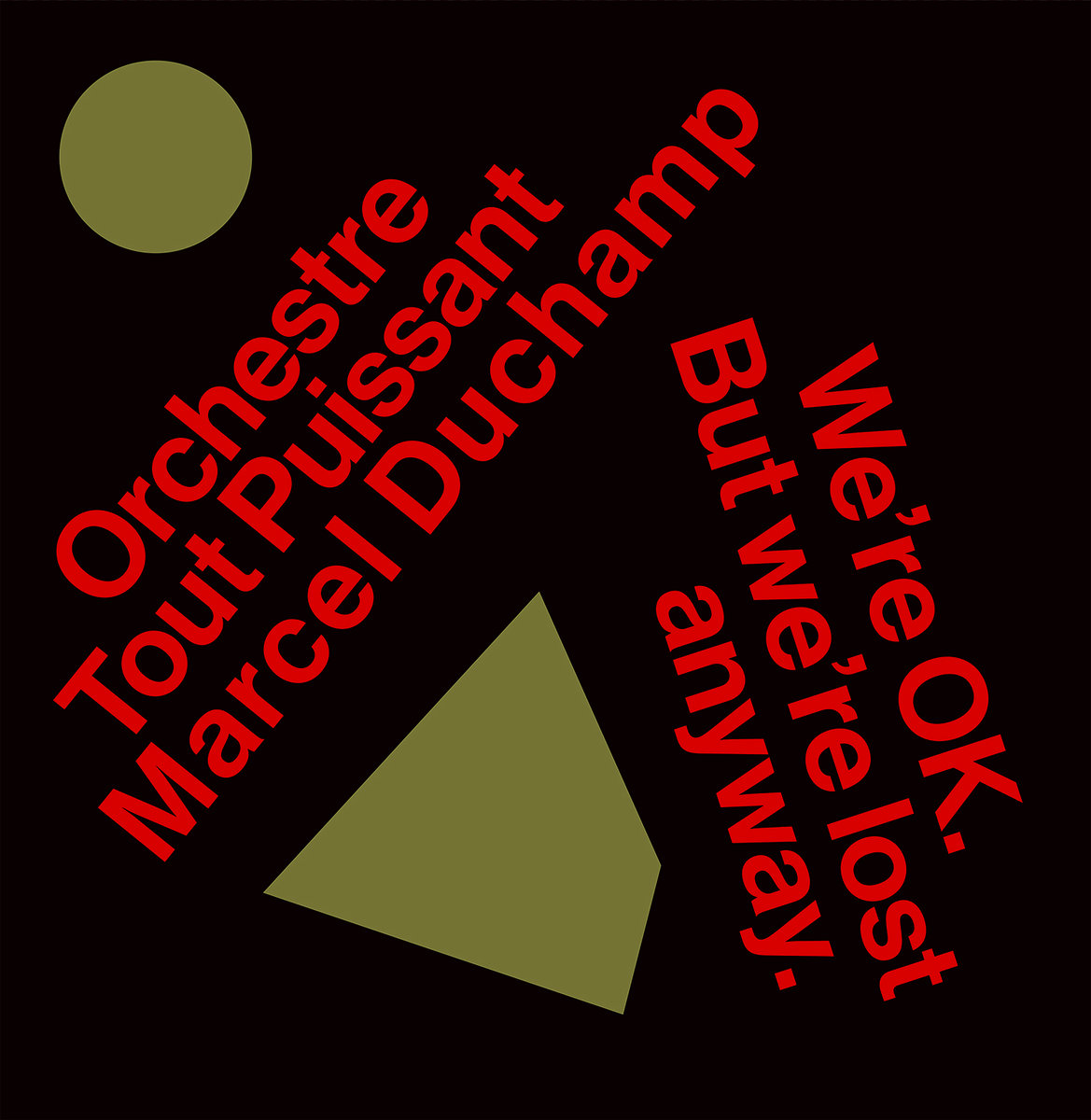- Anthony D'Amico
- Albums and Singles
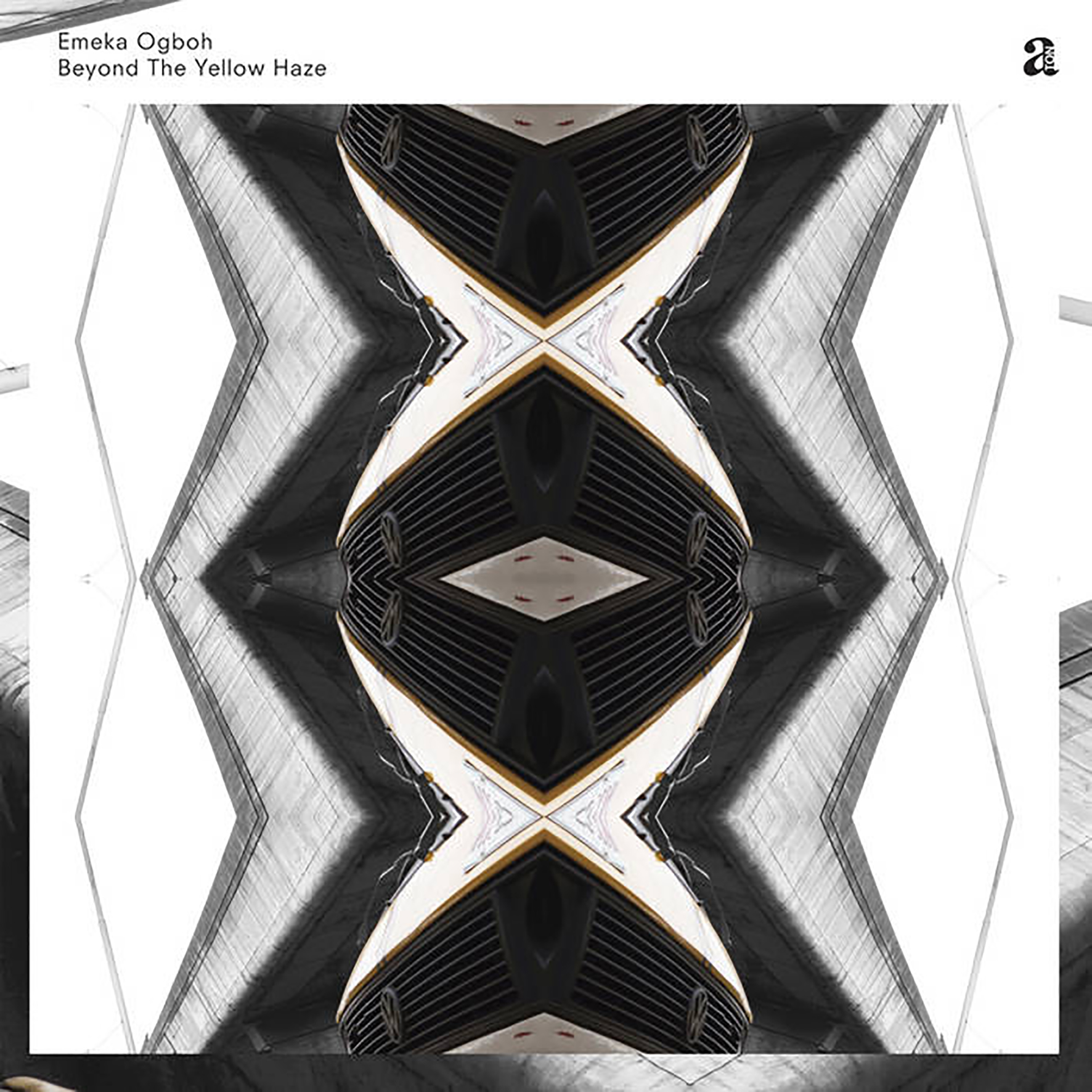 This bombshell release is the first album from Nigerian sound and installation artist Emeka Ogboh, but it sounds like the assured work of killer dub techno producer at the height of their powers. On its surface, Beyond The Yellow Haze admittedly (and probably unintentionally) shares a lot of common ground with prime Muslimgauze, as a central theme of Ogboh's art is his passion for capturing the ambient city sounds of Lagos. Consequently, these five pieces are nicely enhanced with layers of street noise, conversations, and passing snatches of melody, yet Beyond The Yellow Haze is primarily a great album because Ogboh is a goddamn wizard at crafting heavy, shape-shifting grooves with elegant dubwise percussion flourishes. I suppose the beats also creep into Muslimgauze territory at times, as Ogboh is similarly quite fond of slow and hypnotic grooves flavored with African and Arabic rhythms, yet the two artists differ dramatically when it comes to focus and exacting execution (among other things), as nearly every song here is a flawless diamond of immersively layered textures, slow-burning dynamic transformation, and crunching physicality. This is probably the strongest beat-driven album that I have heard all year, debut or otherwise.
This bombshell release is the first album from Nigerian sound and installation artist Emeka Ogboh, but it sounds like the assured work of killer dub techno producer at the height of their powers. On its surface, Beyond The Yellow Haze admittedly (and probably unintentionally) shares a lot of common ground with prime Muslimgauze, as a central theme of Ogboh's art is his passion for capturing the ambient city sounds of Lagos. Consequently, these five pieces are nicely enhanced with layers of street noise, conversations, and passing snatches of melody, yet Beyond The Yellow Haze is primarily a great album because Ogboh is a goddamn wizard at crafting heavy, shape-shifting grooves with elegant dubwise percussion flourishes. I suppose the beats also creep into Muslimgauze territory at times, as Ogboh is similarly quite fond of slow and hypnotic grooves flavored with African and Arabic rhythms, yet the two artists differ dramatically when it comes to focus and exacting execution (among other things), as nearly every song here is a flawless diamond of immersively layered textures, slow-burning dynamic transformation, and crunching physicality. This is probably the strongest beat-driven album that I have heard all year, debut or otherwise.
This is technically a reissue, as the album first surfaced as a limited vinyl release of 150 hand-numbered copies as part of Ogboh's 2018 exhibition at Galerie Imane Farès in Paris. I suspect very few people outside the visual art world noticed or heard that initial release, however, so it is a minor miracle that Berlin's influential Ostgut Ton picked up the baton to give Beyond The Yellow Haze a well-deserved second chance to make an impact three years later. It certainly made an impact on me within its first minute, as "Lekki Aiah Freeway" is a feast of deep dubby grooves, stuttering woodblock flourishes, and dreamlike rave pads. The ghostly synth bits quite beautiful and unexpected, but they are also basically just icing on an already perfect cake: I could listen to Ogboh build and dismantle a beat all goddamn day.
Unsurprisingly, an opening salvo that resembles a giant woodpecker stomping his way Godzilla-style through crowded Lagos streets on his way to the club is quite hard to top, yet Ogboh nevertheless manages to surpass that killer opener at least once with "Everydaywehustlin" (and arguably a second time with the more ambient-inspired "Palm Groove").  In a rough sense, "Everydaywehustlin" is quite similar to "Lekki Aiah Freeway," but with the beautiful synth pads mostly swapped out for layers of street noise and voices. As far as I am concerned, however, the salient point is that "Everydaywehustlin" is a monster groove for the ages, as it sounds like a great Muslimgauze album and a chopped & screwed Notorious B.I.G. tape crash landed in the middle of a busy Lagos street (and the woodpecker is back too). It is, quite simply, an endlessly shifting juggernaut of industrial-damaged heavy dub brilliance. The album's other beat-driven piece ("Danfo Mellow") does not quite hit as hard for me, as a gently burbling synth motif is entrusted with a bit too much heavy lifting, but it may be a good entry point for those looking for a bit melody in the balance. The album's final major piece, "Palm Grove," unexpectedly abandons drums entirely in favor of bleary, rainswept ambiance that evokes a sensual, hallucinatory, and neon-soaked tour of late-night Lagos streets experienced through the window of a slow-moving cab. Remarkably, even the extremely brief "Outro" that concludes album is kind of great, as Ogboh manages to turn 90 seconds of finger bells and distant street noise into an immersive and gently psychotropic reverie. To my ears, this album is at worst two or three instant classics in the span of just five songs, but it comes extremely damn close to being a wall-to-wall tour de force.
Samples can be found here.
Read More
- Duncan Edwards
- Albums and Singles
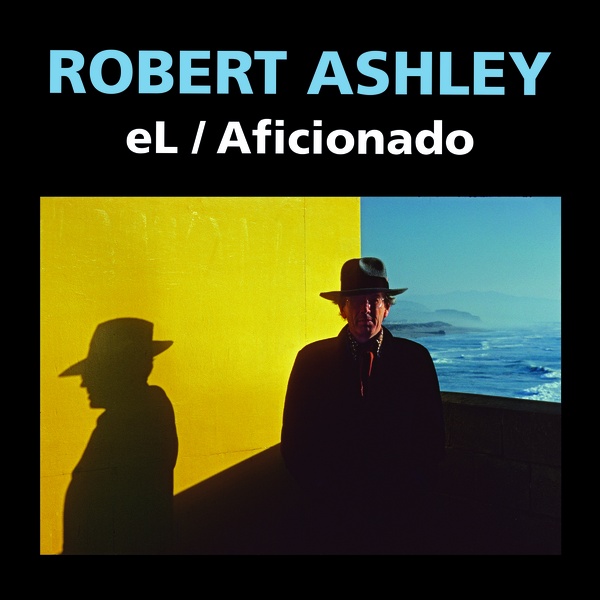 Robert Ashley’s enigmatic opera of interrogation was frequently performed between 1987 and 1993, and a previous recording was released on Lovely Music in 1994. The cast of a 2021 production in Roulette, Brooklyn, are featured on this new rendition, with Kayleigh Butcher, as The Agent, and Brian McCorkle, Bonnie Lander, Paul Pinto as Interrogators #1, 2, and 3. Above and beyond Ashley’s melodies, each participant singer is assigned their own distinct pitch around which they improvise vocal inflections to portray intent and meaning. eL/Aficionado displays the compelling depth of Ashley’s dazzlingly creativity, which is somewhere on a line leading from Edward Hopper and Samuel Beckett to Laurie Anderson and Len Jenkin.
Robert Ashley’s enigmatic opera of interrogation was frequently performed between 1987 and 1993, and a previous recording was released on Lovely Music in 1994. The cast of a 2021 production in Roulette, Brooklyn, are featured on this new rendition, with Kayleigh Butcher, as The Agent, and Brian McCorkle, Bonnie Lander, Paul Pinto as Interrogators #1, 2, and 3. Above and beyond Ashley’s melodies, each participant singer is assigned their own distinct pitch around which they improvise vocal inflections to portray intent and meaning. eL/Aficionado displays the compelling depth of Ashley’s dazzlingly creativity, which is somewhere on a line leading from Edward Hopper and Samuel Beckett to Laurie Anderson and Len Jenkin.
This piece has a clarity of enunciation and easy pace (Ashley favored 79 beats per minute) which gives it a hypnotic and relaxed feel. Yet it is also a work of complexity and intensity which sustains interest over repeated listens. I recommend a least four or five o really get into it. I love the way the language of personal ads and descriptions of real estate heighten the atmosphere of double meaning. These could be coded assignments, perhaps target subjects for The Agent detailing their locations and plans of their residences to aid home invasion, snooping, or worse. The singing and narration are mostly not easily identified as operatic in the classic sense, but they establish the necessary mood. The use of synths adds to the sense of a Kafkaesque trial in a dream landscape. I am reminded of an excellent presentation by Matmos of Ashley’s Private Lives at a festival in Knoxville in 2017, where I nodded off briefly at one point but awoke quite confident that, given the use of repetition and the skillfully disguised material, I had not missed a vital clue. The hypnotic mood of eL/Aficionado is similar; as meaning goes in and out of focus, reassuring voices become sinister, and whispers mislead or give helpful prompts. Yet repeat listens offer up some real jewels, for example the meaning (in The Agent’s department) of the word “brother” and the reference to a “time displacement exercise” and information which must be taken "to the grave." Part gumshoe exit interview, part meditation on the way artists interpret (and alter) their surroundings, part comment on the universality of double lives, part snapshot of the shifting reliability of memory, part critique of society as spectacle; eL/Aficionado is as mysterious and life-enhancing as spending purgatory unable to leave the grounds of the Getty museum because you lost your companion and forgot where you parked.
Read More
- Anthony D'Amico
- Albums and Singles
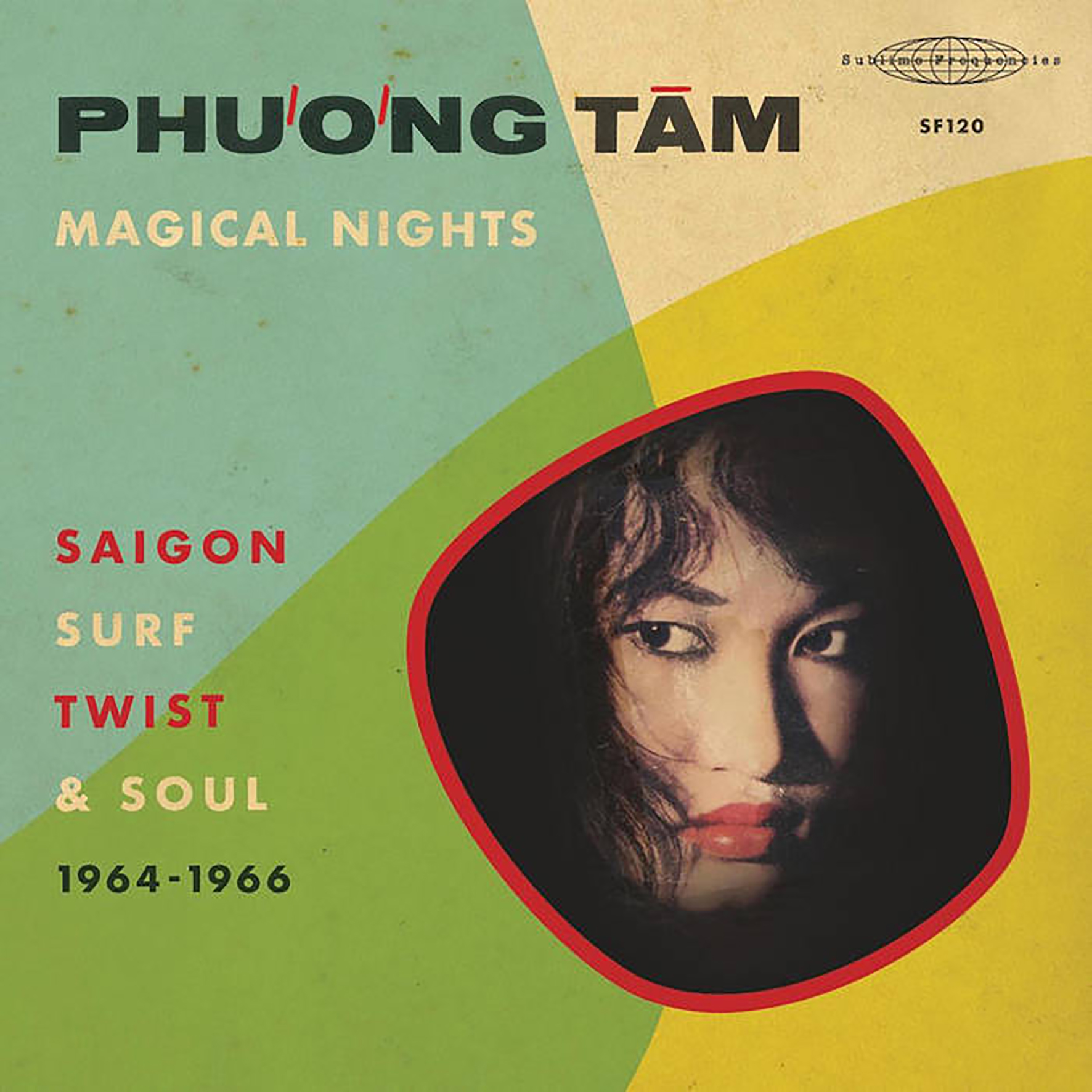 This collection, which I hereby deem an instant Sublime Frequencies classic, is devoted entirely to the long-unheard and elusive discography of one of the most magnetic singers of Saigon's "golden music" age. Part of the reason why Ph∆∞∆°ng T√¢m's work has languished in undeserved semi-obscurity is grimly predictable, as most of her music was destroyed during Vietnam's great purge of American-influenced culture in 1975, but T√¢m also abruptly ended her singing career in her prime to pursue forbidden love instead (an acceptably cool reason, I feel). According to her daughter Hannah H√†, Phương Tâm remained something of a highly localized karaoke supernova in the years since her stardom days, but H√† did not discover how truly famous her mom actually was until late 2019. One thing led to another and H√† found Mark Gergis after discovering his beloved Saigon Rock and Soul compilation. Gergis and a handful of like-minded crate-digging luminaries then set about tracking down as much of Ph∆∞∆°ng T√¢m's rare and often mistakenly attributed oeuvre as they could find, much of which even T√¢m herself had not heard since the recording sessions. While the journey to this album is undeniably a fascinating and heart-warming one, the best part is the songs themselves, as this album is a treasure trove of fun, soulful, and sexy genre-blurring gems from the golden age of swinging Saigon nightlife. Moreover, I was legitimately gobsmacked to learn that these songs were all recorded by the same person in such a brief span, as T√¢m channels everything from Brenda Lee to Ella Fitzgerald to the kind of impossibly cool, sexy, and ahead-of-their-time numbers that feel like would-be highlights from Lux Interior and Poison Ivy‚Äôs oft-anthologized record collection.
This collection, which I hereby deem an instant Sublime Frequencies classic, is devoted entirely to the long-unheard and elusive discography of one of the most magnetic singers of Saigon's "golden music" age. Part of the reason why Ph∆∞∆°ng T√¢m's work has languished in undeserved semi-obscurity is grimly predictable, as most of her music was destroyed during Vietnam's great purge of American-influenced culture in 1975, but T√¢m also abruptly ended her singing career in her prime to pursue forbidden love instead (an acceptably cool reason, I feel). According to her daughter Hannah H√†, Phương Tâm remained something of a highly localized karaoke supernova in the years since her stardom days, but H√† did not discover how truly famous her mom actually was until late 2019. One thing led to another and H√† found Mark Gergis after discovering his beloved Saigon Rock and Soul compilation. Gergis and a handful of like-minded crate-digging luminaries then set about tracking down as much of Ph∆∞∆°ng T√¢m's rare and often mistakenly attributed oeuvre as they could find, much of which even T√¢m herself had not heard since the recording sessions. While the journey to this album is undeniably a fascinating and heart-warming one, the best part is the songs themselves, as this album is a treasure trove of fun, soulful, and sexy genre-blurring gems from the golden age of swinging Saigon nightlife. Moreover, I was legitimately gobsmacked to learn that these songs were all recorded by the same person in such a brief span, as T√¢m channels everything from Brenda Lee to Ella Fitzgerald to the kind of impossibly cool, sexy, and ahead-of-their-time numbers that feel like would-be highlights from Lux Interior and Poison Ivy‚Äôs oft-anthologized record collection.
Fittingly, the story of Phương Tâm's rise to stardom is nearly as strange and improbable as the story of this compilation, as her passion for music was first ignited by the ambient sounds of the courtyard where she played with friends as a child ("from one particular house, all sorts of American music seeped into the courtyard"). Once Tâm was thusly "introduced to a new world beyond traditional Vietnamese music," she proved to be a natural at assimilating the rapidly evolving cultural forces of the era ("musical trends with wild, ephemeral dance crazes were being thought up weekly; the twist, hully gully, the mashed potato – none of them a problem for Phương Tâm."). I dearly hope the same can someday be said of me. Fatefully, Tâm entered a singing competition at age 16 and soon became a fixture at various legendary Saigon nightclubs (often performing at multiple venues in a single night). Unsurprisingly, she quickly caught the attention of all of Saigon's most influential record labels and composers, as she was a "commanding presence" as well as "one of the very first singers to perform and record rock and roll." Demand for Tâm was such that she recorded "almost 30 known tracks" between 1964 and 1966 that seemed to effortlessly channel every fun twist- or rockabilly-esque trend of the time. Most (or all) of those hits are here and they are invariably a delight, yet the real magic of Magical Nights is the handful of less "bubblegum" pieces that feel like a killer surf band, a Bollywood dance party, a James Dean-style teen exploitation film, and a sensuous cabaret chanteuse all blurred together in a perfect cocktail of soulful, kitschy, and hip-shaking fun. One such gem ("Có Nhớ Đêm Nào") kicks off the album in style, but that is only the first of many bombshells to come. My other personal favorites are currently the slinky-sounding "Ngày Phép Của Lính" and the rolling lurch of "Anh Đâu Em Đó," but there is also an extremely generous helping of second-tier highlights destined to keep growing on me, as Tâm was almost always backed by musicians who knew how to whip up a hot groove. This entire album is pure pop bliss.
Samples can be found here.
Read More
- Anthony D'Amico
- Albums and Singles
 This unique debut album is definitely one of the year's most pleasant surprises, as art/music journalist Kretowicz assembled a bevy of talented collaborators to craft a poignant and subtly hallucinatory tour de force of autofiction-based sound art. While some of the people involved (Mica Levi, Tirzah, etc.) certainly enhance the initial allure of I hate it here, it is a great challenge to focus on anything other than Kretowicz's sardonic, time-bending narrative as soon as she opens her mouth and things gets rolling. Thematically, the album is billed as a "psychedelic audio narrative" that "wanders through a layered and multi-dimensional notion of existence as suffering," which mostly feels apt, yet it fails to convey how truly charming and blackly funny wandering through that notion with Kretowicz can be. More importantly, this is the rare spoken word album that remains compelling beyond the first listen, as the combination of Kretowicz's deadpan, accented voice and the sound collage talents of felicita & Ben Babbitt make it an absorbing delight long after the meaning and impact of Kretowicz's words dissipate into more abstract and nuanced pleasures like texture and feeling. To my ears, this is one of the most inspired, immersive, and memorable albums of the year.
This unique debut album is definitely one of the year's most pleasant surprises, as art/music journalist Kretowicz assembled a bevy of talented collaborators to craft a poignant and subtly hallucinatory tour de force of autofiction-based sound art. While some of the people involved (Mica Levi, Tirzah, etc.) certainly enhance the initial allure of I hate it here, it is a great challenge to focus on anything other than Kretowicz's sardonic, time-bending narrative as soon as she opens her mouth and things gets rolling. Thematically, the album is billed as a "psychedelic audio narrative" that "wanders through a layered and multi-dimensional notion of existence as suffering," which mostly feels apt, yet it fails to convey how truly charming and blackly funny wandering through that notion with Kretowicz can be. More importantly, this is the rare spoken word album that remains compelling beyond the first listen, as the combination of Kretowicz's deadpan, accented voice and the sound collage talents of felicita & Ben Babbitt make it an absorbing delight long after the meaning and impact of Kretowicz's words dissipate into more abstract and nuanced pleasures like texture and feeling. To my ears, this is one of the most inspired, immersive, and memorable albums of the year.
The album has the feel of a radio play, as it is centered primarily upon Kretowicz's recounting of a few significant events from her life, but her monologue is fleshed out with other voices, subtle ambient colorings, field recordings, and several surreal intrusions from scene-appropriate songs (such as Polish disco, for example). There is also a bittersweetly lovely piano theme that recurs at key moments throughout the piece. At its core, however, the album is essentially a handful of interwoven narrative threads united by the theme of suffering: an infected tattoo, an uncomfortable van trip to Poland, a desperate visit to a shaman, and the final days and funeral of Kretowicz's grandmother. Given that dark theme, a deep current of sadness, disconnection, and restlessness certainly runs throughout the album, yet Kretowicz wraps her heartwrenching memories in such a colorful, digression-filled, and bleakly amusing storytelling aesthetic that it all feels intimate, transcendent, and beautiful rather than uncomfortably sad. For example, a brief and incomplete list of my favorite moments includes: the tale of the aforementioned tattoo, a discussion of how Polish truck drivers keep themselves entertained, a morbid rumination interrupted with strong opinions about pants, Kretowicz's thoughts during a psychotropic shamanic ritual, and a treasured memory of the fleeting happiness she once experienced at a PJ Harvey concert. While a couple of the album's smeared stabs at psychedelia do not quite hit the mark for me, Kretowicz herself is an unwaveringly interesting and entertaining monologist and the album is masterfully edited and paced from start to finish. Moreover, it all builds up to quite an emotional wallop of an ending, but so far that ending has not been too heavy to deter me from immediately starting the album over again as soon as it ends. My gut tells me that I hate it here is an instant classic.
Samples can be found here.
Read More
- Anthony D'Amico
- Albums and Singles
 This is one of those rare collaborations in which I had absolutely no idea what kind of album to expect, as the only obvious common ground this duo shares is a strong interest in sound design, though it is probably safe to say they are both drawn to unusual projects too given their past involvement with Rắn Cạp ĐuôI Collective. Now that I have heard Myxomy, however, I am faced with the fresh challenge of describing a vision that is elusively shapeshifting, kaleidoscopic, and wrong-footing from start to finish. I suppose the most consistent aesthetic is something akin to "half-deconstructed/half-maximalist outsider R&B" or some similarly heretofore nonexistent genre, but the real theme seems to exclusively be one of endless mutation. In fact, the idea for the collaboration originally began with James Ginzburg sending Ziúr some beats from his early techno days, which triggered a dueling exchange of raw material reworkings that rapidly escalated and morphed until the "duo's fragmented sketches and scribbles took on new life" that "developed into anxious, hybridized pop jewels." To be fair, Myxomy is admittedly poppier than I ever would have anticipated, but this project is waaaaay too weird, fractured, and unpredictable to ever be mistaken for actual pop (jewels or otherwise). It mostly feels more like a handful of hooks wandering through a collapsed post-industrial landscape in search of a proper home. I am not sure any of them ever quite found one (seems doubtful), but some of these experiments are impressively visceral and unique in their own right (even if they can sometimes be a real challenge to digest).
This is one of those rare collaborations in which I had absolutely no idea what kind of album to expect, as the only obvious common ground this duo shares is a strong interest in sound design, though it is probably safe to say they are both drawn to unusual projects too given their past involvement with Rắn Cạp ĐuôI Collective. Now that I have heard Myxomy, however, I am faced with the fresh challenge of describing a vision that is elusively shapeshifting, kaleidoscopic, and wrong-footing from start to finish. I suppose the most consistent aesthetic is something akin to "half-deconstructed/half-maximalist outsider R&B" or some similarly heretofore nonexistent genre, but the real theme seems to exclusively be one of endless mutation. In fact, the idea for the collaboration originally began with James Ginzburg sending Ziúr some beats from his early techno days, which triggered a dueling exchange of raw material reworkings that rapidly escalated and morphed until the "duo's fragmented sketches and scribbles took on new life" that "developed into anxious, hybridized pop jewels." To be fair, Myxomy is admittedly poppier than I ever would have anticipated, but this project is waaaaay too weird, fractured, and unpredictable to ever be mistaken for actual pop (jewels or otherwise). It mostly feels more like a handful of hooks wandering through a collapsed post-industrial landscape in search of a proper home. I am not sure any of them ever quite found one (seems doubtful), but some of these experiments are impressively visceral and unique in their own right (even if they can sometimes be a real challenge to digest).
I suspect the title of the opening "Sloppy Attempt" provides some self-deprecating insight into the mindset that Ginzburg and Zi√∫r brought to the Myxomy vision, as it seems like the pair genuinely delighted in breaking and stretching each other's work and all other concerns were purely secondary. That is not intended as a disparagement, but the primary pleasures of this album are definitely in the vein of "this is a playground where songs convulse and break in interesting ways" rather than "check out all these hot new singles we wrote." Helpfully, "Sloppy Attempt" is also one of the more representative pieces on the album, as a blooping synth hook seems to keep wandering off course rather than locking into a groove. Nevertheless, a groove eventually does take shape (albeit fitfully) and the piece blossoms into a seething and moody song of sorts. In the rare moments where the beat does not collapse and the bass line is allowed to unfold naturally, it is not hard to see the ghost of a much catchier song lurking inside it all, but the overall impression is one of a remixer purposely stretching and pushing that hapless piece past its breaking point to see what happens.
The following “A Little Opaque” takes a similar trajectory, as a squirming and glistening synth pile-up sluggishly lurches forward along with spectral vocals and thudding, slow-motion drums. Naturally, every time it threatens to catch fire, it quickly gets pulled apart, ravaged by static, smeared, or broken in some way. "Make self-sabotage an art form" definitely seems to have been a guiding principle here. That said, the following three-song run can be quite impressive at times. The hot streak begins with "In and until," which sounds like a howling, junkyard percussion variation upon the massive rattling metal strings of Ginzburg's last solo album (Crystallise, A Frozen Eye). Next, "It is it everything" unleashes an absolutely killer motif that sounds like a haunted, lysergically smeared vibraphone enhanced with lots of wonderfully clattering and ringing metallic textures. It is a bit too sizzling and erratic to make a strong single though, which seems like a real missed opportunity. In fact, I strongly feel it deserves its own remix album (collaborative cannibalization is in Myxomy's DNA, after all). Elsewhere, the heavy industrial crunch of the following "Toxin Out" admittedly feels closer to earthquake than groove, but it is damn hard not to be charmed by the rousing chorus of "eat the rich and throw up on the fuckbois." The closing "Nuance Unseen" (another self-deprecating title) is also quite enjoyable in a seething/clattering/industrial-damaged R&B way and makes some more fine use of howling violin. If someone threatened to kill me if I did not choose a single for this album, I would probably pick that one. For the most part, however, Myxomy's pleasures lie primarily in hearing Ginzburg and Ziúr inventively mangle each other's work and veer quite far off course from their expected terrain (though fans of Ben Frost-style seismic intensity will likely find much to appreciate in that regard too).
Samples can be found here.
Read More
- Eve McGivern
- Albums and Singles
 Montreal's Yoo Doo Right, aptly named after a very early Can track, are absolutely about that vibe; one doesn't need to be a keen listener to catch that early on. However, the band's debut album is not a duplicate of any single kosmische entity but rather a blend of each best. They have been doing their homework, revealing a deep respect for the genre. Their debut "Don't Think You Can Escape Your Purpose" provides some of the best modern space rock released this year, filled with motorik rhythms and atmospheric guitars backed by solid bass lines. The music feels free enough to go off on tangents but always comes back around, fluidly alternating from dreamy fuzz to delicate ambiance before rocking out motorik-style.
Montreal's Yoo Doo Right, aptly named after a very early Can track, are absolutely about that vibe; one doesn't need to be a keen listener to catch that early on. However, the band's debut album is not a duplicate of any single kosmische entity but rather a blend of each best. They have been doing their homework, revealing a deep respect for the genre. Their debut "Don't Think You Can Escape Your Purpose" provides some of the best modern space rock released this year, filled with motorik rhythms and atmospheric guitars backed by solid bass lines. The music feels free enough to go off on tangents but always comes back around, fluidly alternating from dreamy fuzz to delicate ambiance before rocking out motorik-style.
The tracks on "Don't Think You Can Escape Your Purpose" are not jams; if they are, they are genuinely well-constructed. The songs are catchy ear-worms, as is the case for "The Moral Compass of a Self-Driving Car," a track comprised of elements of all the classic Kosmiche riffs strung into a perfect spaced-out dream. The musicians pause as if letting the listener in a little secret, uttering a single repeat phrase: "Back up, you're moving too fast," before kicking it into high gear as if to prove a point, only to pull back into a gorgeous mashup of sonic bliss.
Both sides are nearly perfect, start to finish, with the only weak tracks the first on each side; songs that serve as "intros" into grander sounds. I initially listened to it track by track, identifying standouts, but the album felt satisfying whole after listening end-to-end. The album begins with "A Certain Sense of Disenchantment," sounding like the start to a desert vision quest, a mystical sounding tune that is pleasant enough. Then everything changes with the segue into "1N914," exploding into a blistering wall of sound, with wailing guitars and frenetic drumming, expertly balanced guitar riffs that ebb and flow alongside atmospheric keyboards. From there, things don't let up, ending with the majestically bombastic "Black Moth."
This is one of my favorites this year for this type of headspace; it's a memorable sonic adventure for space cadets. Headphones are optional.
Samples can be found here.
Read More
- Eve McGivern
- Albums and Singles
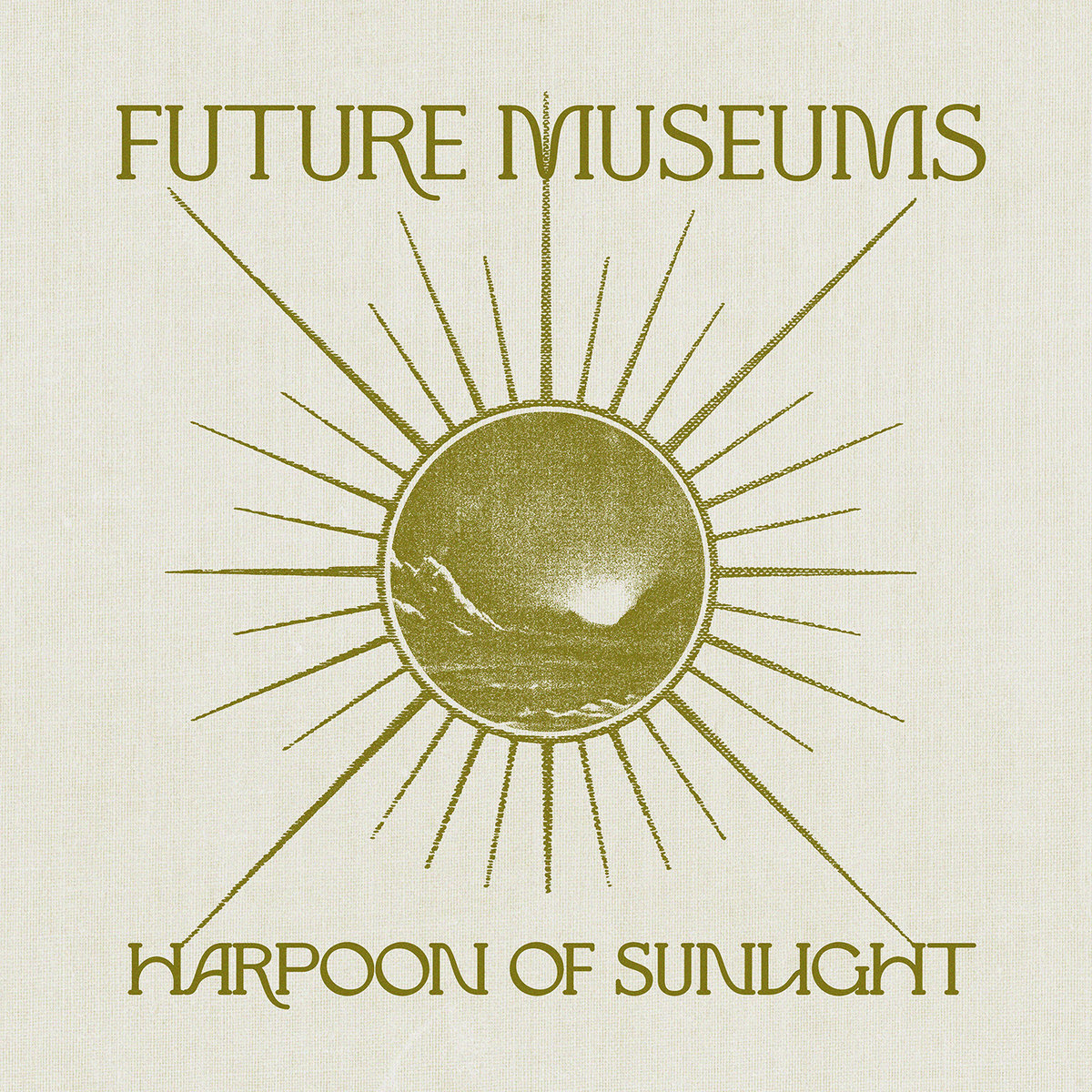 "Harpoon of Sunlight" sees Neil Lord's project Future Museums releasing on Austin label Aural Canyon, a label whose tagline reads "Deep listening for the new, now age." While Lord also releases on Holodeck, the switch is appropriate for his latest, a work initially conceived as "an hour and a half long album exercising patience and repetition," of which the most melodic portions were pressed to the first vinyl release for both the artist and label. Recorded in quarantine in 2020, the resulting album reflects the intense Texas summer heat, alternating between warming and traumatic, interrupted only by cooler evening breezes that serve as a reprieve. Inventive percussive sounds are delicately strewn through atmospheric synths and motorik rhythms, providing a balance between hard and soft, and hot to cool, serving as an aural respite for the challenges of the past couple of years.
"Harpoon of Sunlight" sees Neil Lord's project Future Museums releasing on Austin label Aural Canyon, a label whose tagline reads "Deep listening for the new, now age." While Lord also releases on Holodeck, the switch is appropriate for his latest, a work initially conceived as "an hour and a half long album exercising patience and repetition," of which the most melodic portions were pressed to the first vinyl release for both the artist and label. Recorded in quarantine in 2020, the resulting album reflects the intense Texas summer heat, alternating between warming and traumatic, interrupted only by cooler evening breezes that serve as a reprieve. Inventive percussive sounds are delicately strewn through atmospheric synths and motorik rhythms, providing a balance between hard and soft, and hot to cool, serving as an aural respite for the challenges of the past couple of years.
Leading off with "Hum Body," the percussive elements stand front and center, providing a foundational rhythm offset by ethereal electronics. Lord utilizes his mastery of electronics to deliver depth and expanse throughout, using sustained notes and sound manipulation to encourage a deep listening experience. While the album is solid as a whole, some of the results are more penetrating than others, particularly on "Earthside" and the title track. In "Earthside," Lord guides us through rolling waves of gently undulating sound, encouraging immersion by providing a rich soundscape of melody, moving up and down a scale of notes interspersed by worldly and otherworldly sounds. "Harpoon of Sunlight" appears as a stab of sound warmth, building in intensity, driven by a heart-wrenching melody that builds into a grandiose finish, all the while capturing the feeling Lord is leading his listeners higher and higher into the sky. It's almost as if one can feel the sunlight sparkling on leaves.
Closing track "Morning Reception" is another standout track, a worthy conclusion to an album that serves to guide the listener metaphorically through the night and out into the light. What better way to express movement from dark to light than through an aural expression of greeting a fresh new day? The prolific Lord surely has more up his sleeve; I've yet to be disappointed in any Future Museums release. May this wonderful album bring his name further into the light.
Samples can be found here.
Read More
- Eve McGivern
- Albums and Singles
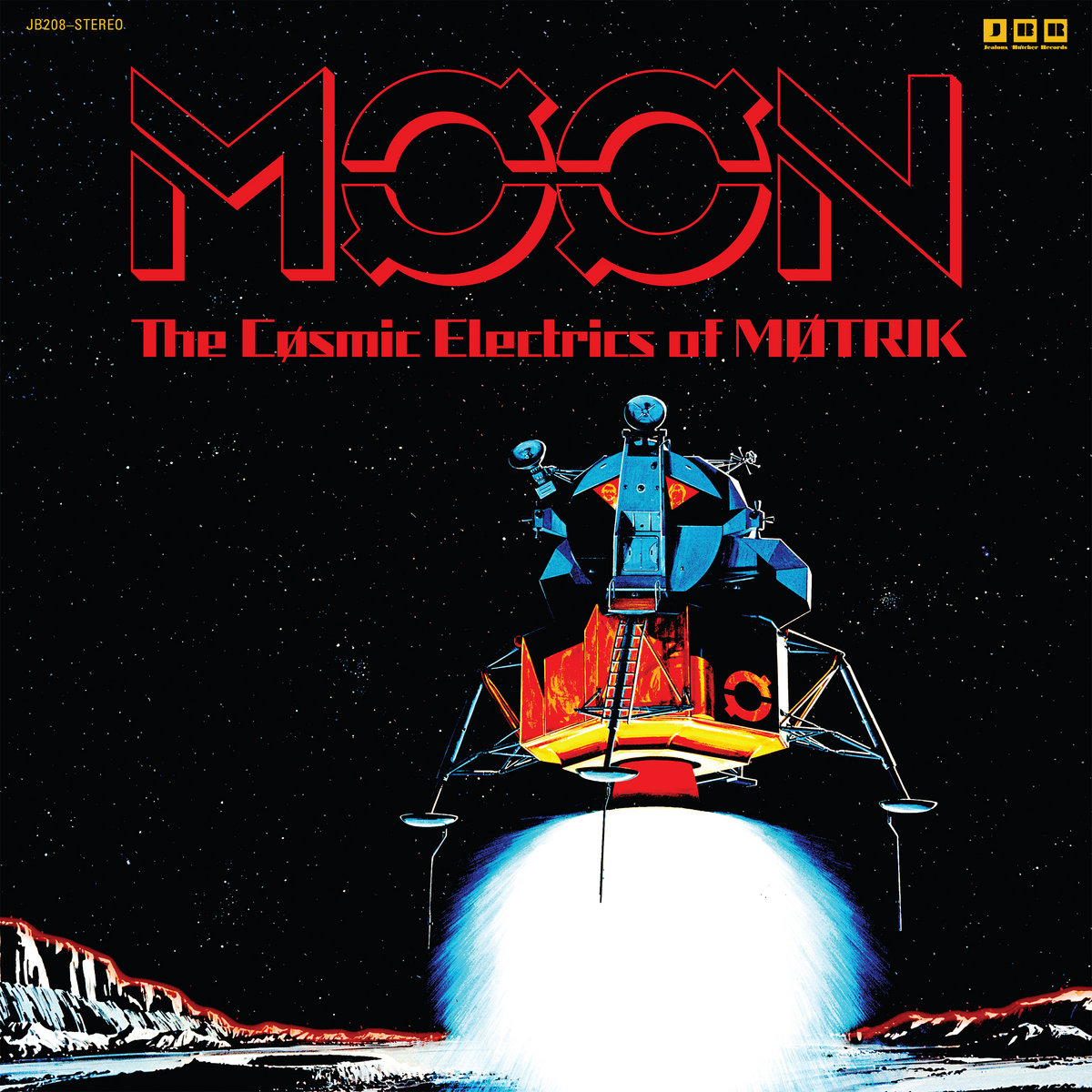 The latest from Portland, Oregon's appropriately named M√∏trik consumed me in seconds, dragging my earholes down into a kosmische pool before spitting me into outer space. Thankfully, it was a pleasantly symbiotic relationship for me, a journey I enjoyed taking into M√ò√òN: The Cosmic Electrics of M√òTRIK. While M√∏trik may not yet stand alongside their elders in the history books, each of its practiced members form a tight rhythm section of bass and drums, knowing exactly when to lay on the space by way of thick layers of distortion and when to visit more ethereal territory.
The latest from Portland, Oregon's appropriately named M√∏trik consumed me in seconds, dragging my earholes down into a kosmische pool before spitting me into outer space. Thankfully, it was a pleasantly symbiotic relationship for me, a journey I enjoyed taking into M√ò√òN: The Cosmic Electrics of M√òTRIK. While M√∏trik may not yet stand alongside their elders in the history books, each of its practiced members form a tight rhythm section of bass and drums, knowing exactly when to lay on the space by way of thick layers of distortion and when to visit more ethereal territory.
Prime examples of the band's namesake include "Streamline," "Space Elevator," and "Stabilize," while personal favorite "Red Eye" is practically a dancefloor thumper. While the album is heavy on German-style kosmische rock, there are elements of Berlin-School scattered throughout (closing track "Sonik Rug" sounds eerily like an early Vangelis song). Treated vocals are limited in favor of extended, hypnotic rhythms, with no track shorter than five minutes, the longest clocking over 14 minutes.
The progression from Møtrik's prior albums has me paying attention. MØØN is a wonderful modern take on kosmische music, and I'm genuinely excited to see where they take things.
Samples can be found here.
Read More
- Duncan Edwards
- Albums and Singles
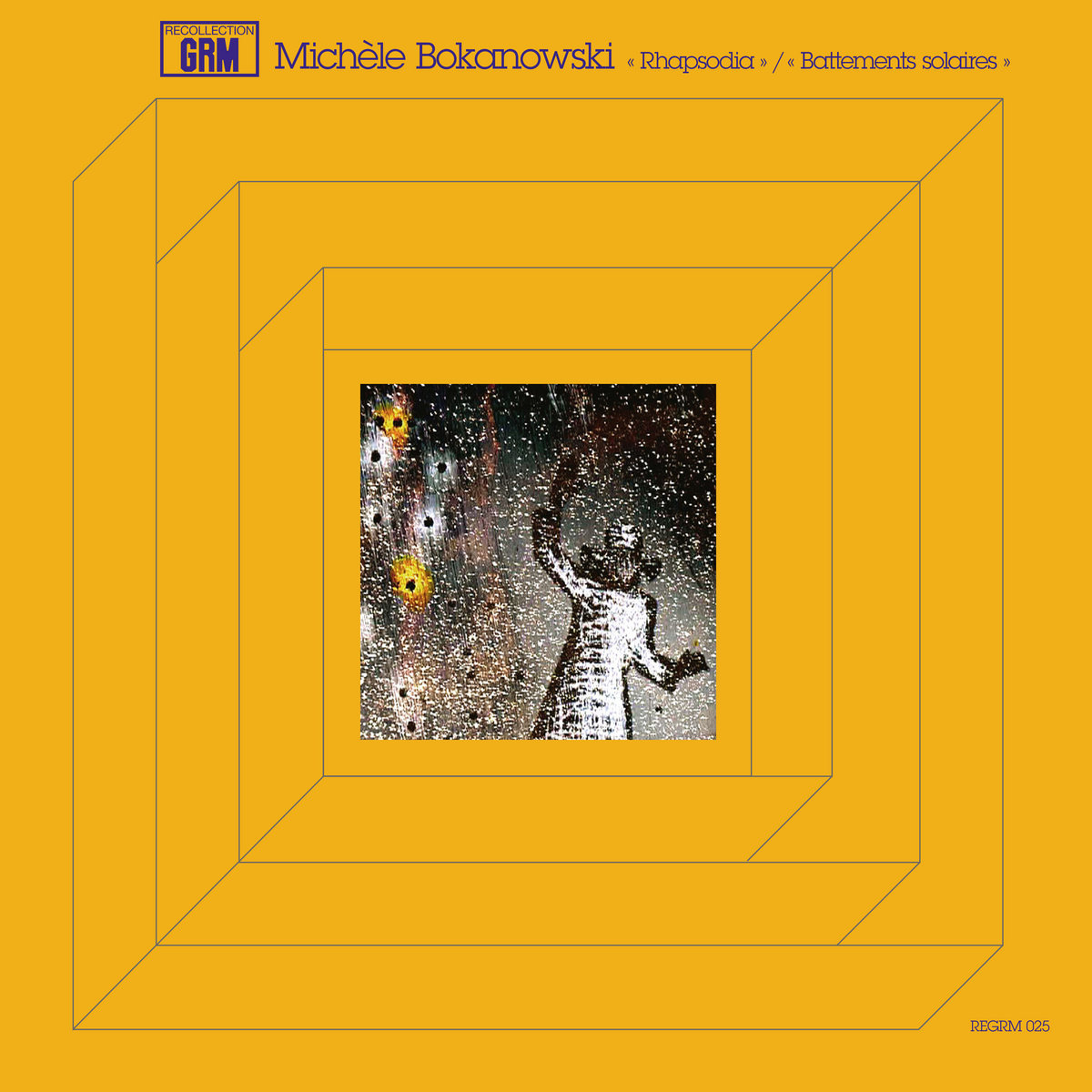 This electro-acoustic release by Michèle Bokanowki consists of two pieces. "Rhapsodia" from 2018, is a stunning work in two movements with a short interlude, dedicated to choreographer, Marceline Lartigue. "Rhapsodia" is as close to perfection as I can imagine music to ever be, with the texture, the pace, the changes, and the timing of the changes all working in an organic and unhurried way. "Battlement solaires" from a decade earlier, is the soundtrack to Patrick Bokanowski’s film of that name. Initially I felt this second piece might be best heard with visual images, but by the third hearing I utterly love it as a stand alone work, too.
This electro-acoustic release by Michèle Bokanowki consists of two pieces. "Rhapsodia" from 2018, is a stunning work in two movements with a short interlude, dedicated to choreographer, Marceline Lartigue. "Rhapsodia" is as close to perfection as I can imagine music to ever be, with the texture, the pace, the changes, and the timing of the changes all working in an organic and unhurried way. "Battlement solaires" from a decade earlier, is the soundtrack to Patrick Bokanowski’s film of that name. Initially I felt this second piece might be best heard with visual images, but by the third hearing I utterly love it as a stand alone work, too.
In these compositions, Bokanowski makes incredibly subtle changes and only after each element and has fully blossomed. She is such an experienced composer that the spiritual depth and attentiveness to uncluttered illumination in these tracks is at times quite staggering. If these sounds were a fireworks display, it is as if she does not let the momentum lag yet never obscures a single spark or any fading light trail with another rocket until they have been properly seen. This requires confidence, honesty and patience. Her music does not labor over specific ideas, or attempt to trigger vague or irrational feelings, or nostalgic sentiments. There is no need to approach it as a puzzle to be solved or message to be deciphered. There are hundreds of possibilities here and I will not isolate any one idea, other than to say take the time to allow the music to bloom and ripen. About five years ago I attended saw a showing of Patrick Bokanowski's L'Ange/The Angel at the Nasher Sculpture Center, in Dallas. Michèle Bokanowski created the soundtrack for that exquisite film; her music matching the images with such amazing quality and sensitivity. It almost brings a tear to my eye to recall that the couple were present for the screening, sitting together, looking very humble and decidedly un-showbiz. Bless them both as artists and bless you for listening to Rhapsodie/Battements solaires and seeking out L'Ange.
Read More
- Anthony D'Amico
- Albums and Singles
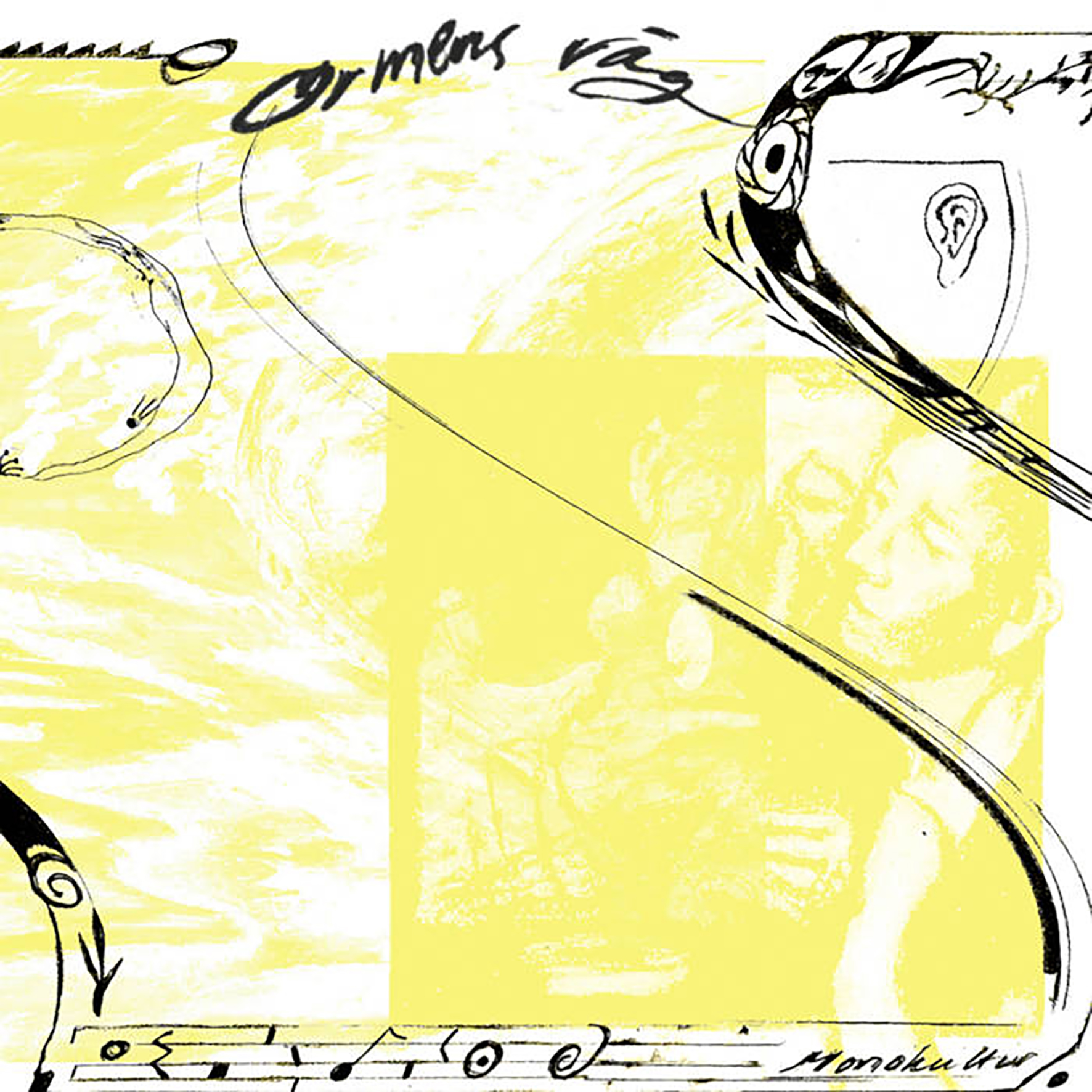
This is the second full-length from the Swedish minimal wave/post-punk duo of JJ Ulius (Skiftande Enheter) & Elin Engström (Skiftande Enheter/Loopsel). Significantly, Monokultur spawned from the same fertile milieu that brought us Neutral, Enhet För Fri Musik, Treasury of Puppies, and every other great Gothenberg project, so it is not particularly surprising that Monokultur are excellent as well. While I suspect that Enhet För Fri Musik will remain securely ensconced as my favorite emissaries from Sweden's thriving underground scene for the near future, Monokultur definitely craft some of the strongest singles of anyone in that scene. In fact, they almost resemble a variation of Neutral in which Sofie Herner and Dan Johansson suddenly realized they could celebrate hiss-soaked grayscale murk and write catchy, hook-filled songs at the same time. That is not meant to disparage Neutral (whom I also enjoy), but Monokultur definitely have less of a scorched earth approach to human warmth and lovely undestroyed melodies. In any case, this album is excellent, as Monokultur are getting very close to perfecting a vision in which gnarled post-industrial artiness, bedroom pop, and 4AD-style romanticism can seamlessly intertwine and enhance each other.
Ever/Never & Mammas Mysteriska Jukebox
The wobbly, bleary, and hypnagogic/somnambulant opener "Decennium" offers a fairly representative crash course in what to expect from Ormens Väg: hushed, intimate, and melancholy lo-fi pop songs that feel like they were recorded alone in a small apartment in a cold, bleak city at 3am in 1982. In fact, Monokultur capture urban alienation so exquisitely that it is legitimately surprising that they are a duo, as it is damn hard to imagine two people on such a dark wavelength ever connecting with one another. It is similarly surprising that Engstrom and Ulius are able to articulate their deep malaise in such a tenderly melodic and charmingly ramshackle way, sometimes approximating a promising minimal wave duo that discovered hard drugs, heartache, and Throbbing Gristle to disastrous impact on their commercial prospects.
To my ears, “Demokrati” is probably the piece that captures Monokultur at their best, as it combines a simple, lovely organ melody with a slowly, chugging rhythm and hushed male/female vocal harmonies, but there are several similarly successful pieces that veer off in divergent directions. For example, the Ulius-sung "För Sent" sounds like a rough late-period Joy Division demo for another "Atmosphere"-style hit, except Ian Curtis is uncharacteristically sleepy, distracted, and Swedish. The effect is weirdly charming, which is likely due to the quietly lovely backdrop of quivering, hallucinatory synth melodies, warped guitar shimmer, and a languorously sensual pulse. Elsewhere, "Pennan i handen" sounds like a ghostly DIY country song or a sleepily sexy, ennui-soaked inversion of The Cramps who were more inspired by brutalist architecture and Ingmar Bergman films than classic rockabilly and sleaze. My other favorite pieces are "Vårdagjämning" and "Människor och träd," which respectively enhance the Monokultur aesthetic with heavy, haunted-sounding industrial loops and a lovely spoken word performance from guest Charlott Malmenholt. The latter piece comes as a quite a surprise at the end of the album, as it feels almost upbeat and tropical (think "Cocteau Twins make an impressionist exotica album…but with poetry!"). The only real caveat with this album might be that it will probably be too gloomy for some, but I think Jack Rollo nailed Monokultur's appeal in his liner notes ("sudden moments of heart-wrenching familiarity"), as it seems like there is always an unexpected melody, poignant chord change, or cool twist just around the corner with this album.
Samples can be found here.
Read More
